Professional baseball first came to St. Petersburg, Florida, as early as 1908 when the then- independent St. Paul Saints played an exhibition game against the National League Cincinnati Reds. In 1914, businessman and future mayor Al Lang convinced the St. Louis Browns to come to St. Petersburg and train at Sunshine Park – also known as Coffee Pot Park because of its location near Coffee Pot Bayou in St. Petersburg. The Browns stayed in St. Petersburg only one season. From 1915 through 1918, the Philadelphia Phillies trained at Coffee Pot Park.
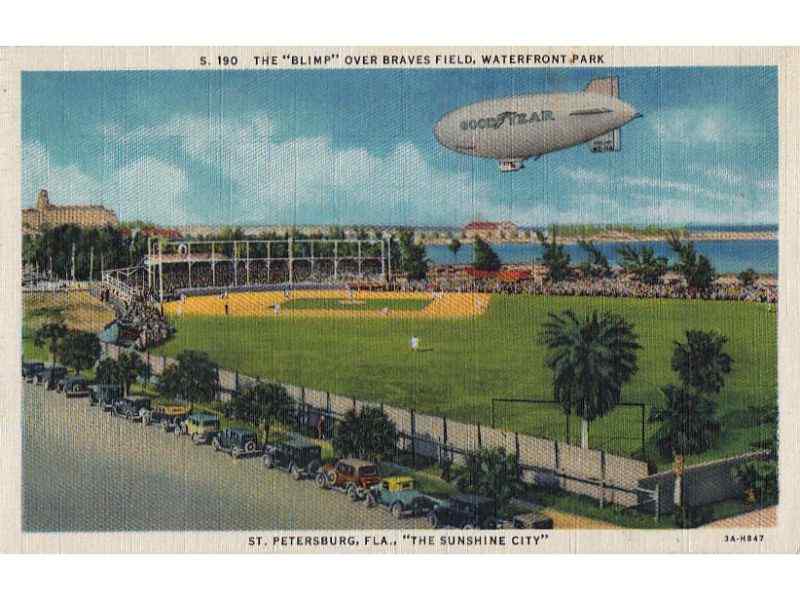
In 1922, a new ballpark opened along the shoreline of Tampa Bay in St. Petersburg on a patch of land that was part of the city’s mile-long Waterfront Park. The ball field, also known as Waterfront Park, was located at the intersection of 1st Avenue S.E. and First Street S.E. It was the spring training grounds of the Boston Braves beginning in 1922.
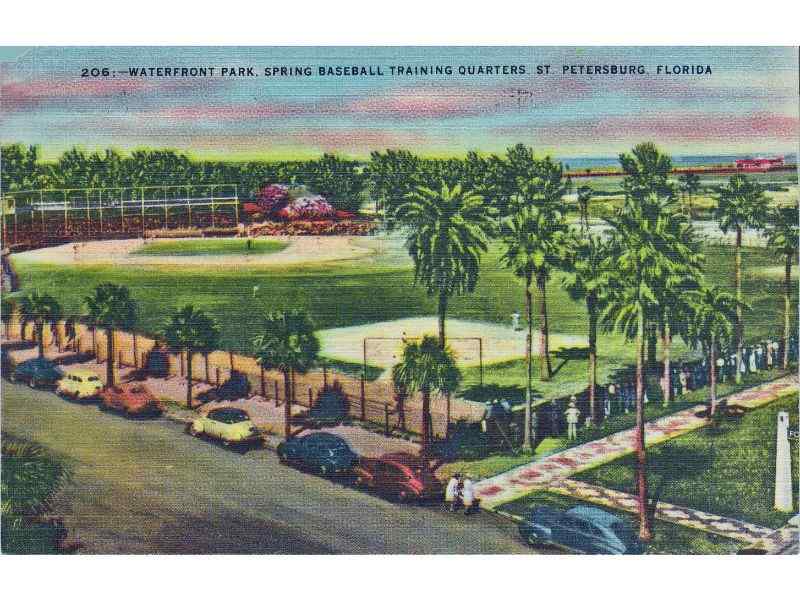
In 1925, the New York Yankees began training in St. Petersburg at nearby Crescent Lake Park, while playing some of their games at Waterfront Park. The Braves departed St. Petersburg after the 1937 season and the St. Louis Cardinals moved to Waterfront Park in 1938, sharing the facility with the Yankees for Spring Training games.
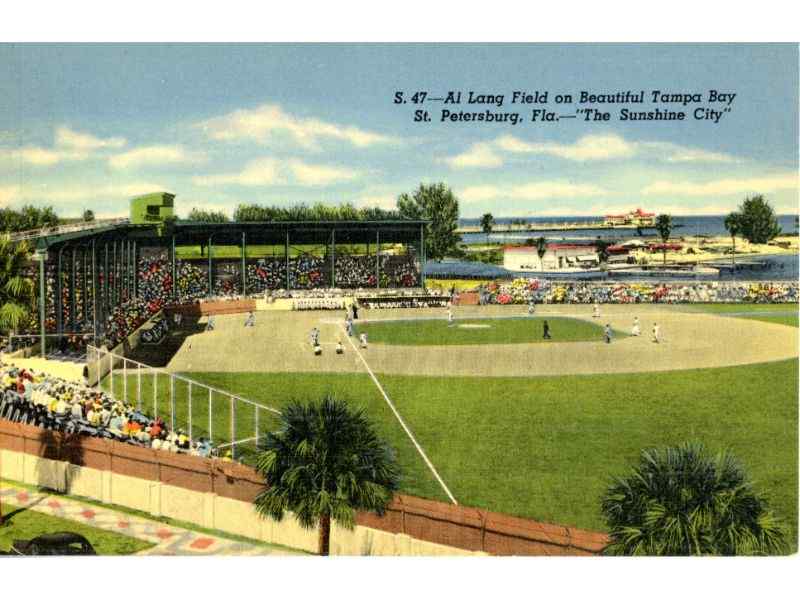
In 1947, Waterfront Park was demolished and replaced by Al Lang Field, named in honor of the man who helped establish St. Petersburg as a spring training mecca. Al Lang Field was constructed on land one block south of the northern most point of Waterfront Park.
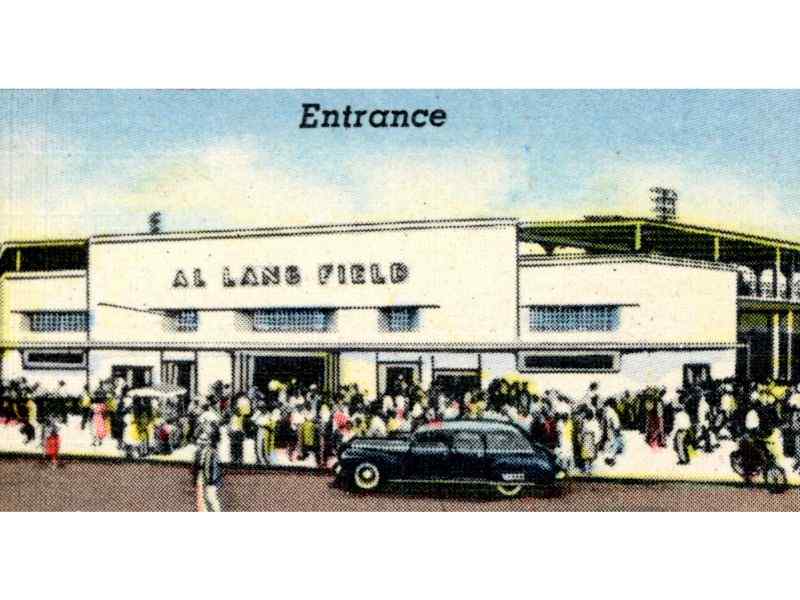
Thus, the grandstand at Al Lang Field was built on top of Waterfront Park’s former infield.
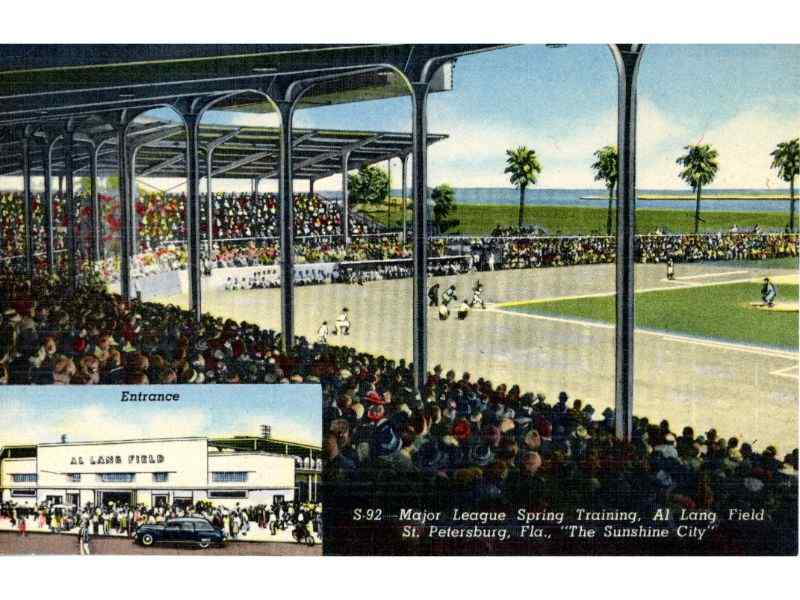
The exact location of Waterfront Park in relation to Al Lang Field is evident by comparing the two ballparks as they appear below in the two aerial postcards of Waterfront Park and Al Lang Field.
Waterfront Park:
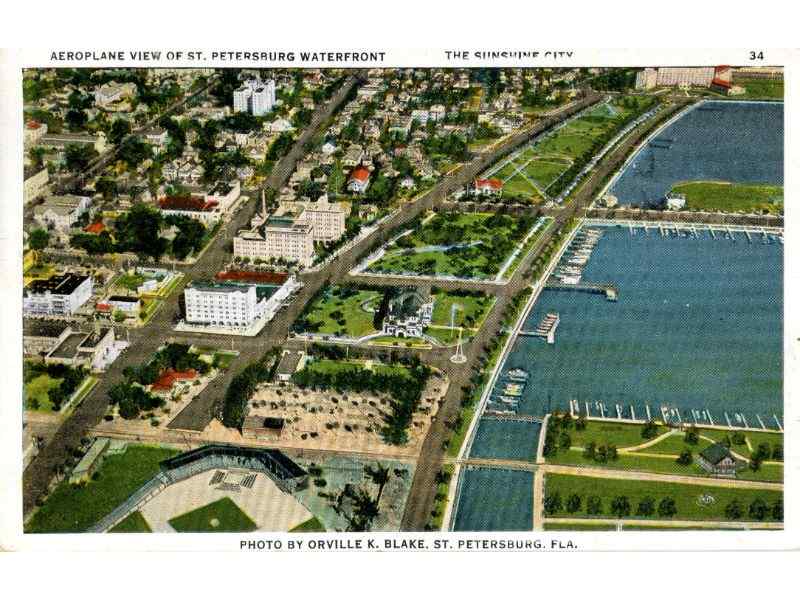
Al Lang Field:
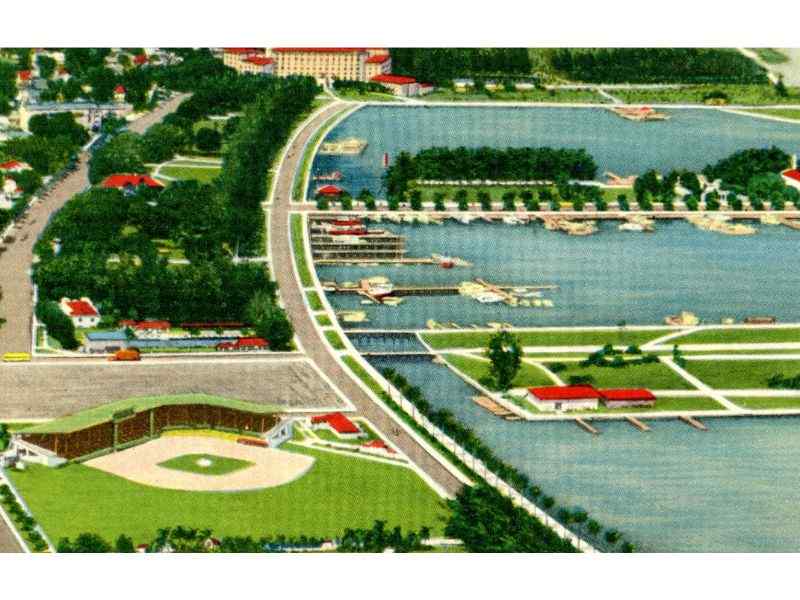
As can be seen from the above two postcards and the postcard below, a parking lot for Al Lang Field was constructed where Waterfront Park’s grandstand once stood. In the city block just north of the parking lot is Pioneer Park, which honors St. Petersburg’s earliest settlers.
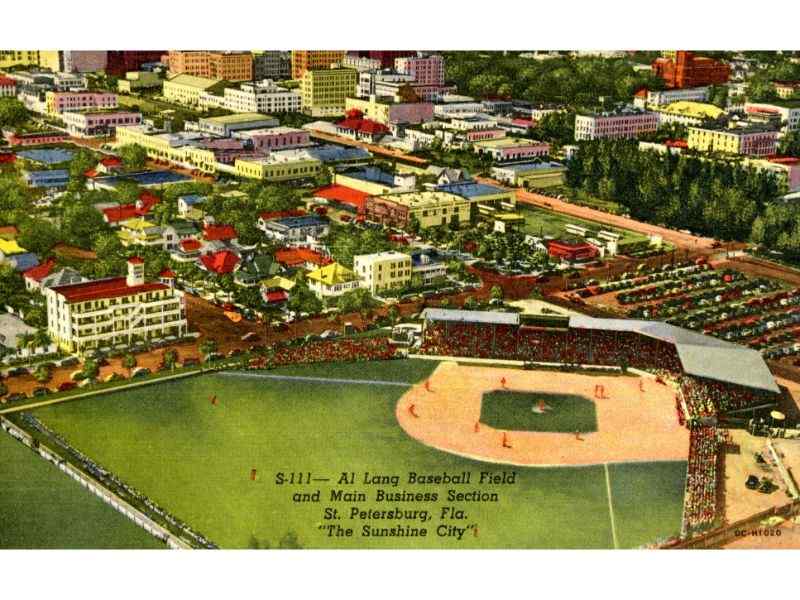
In 1977, Al Lang Field was demolished and replaced by Al Lang Stadium, a concrete structure with little of the charm offered baseball fans at Al Lang Field and Waterfront Park.
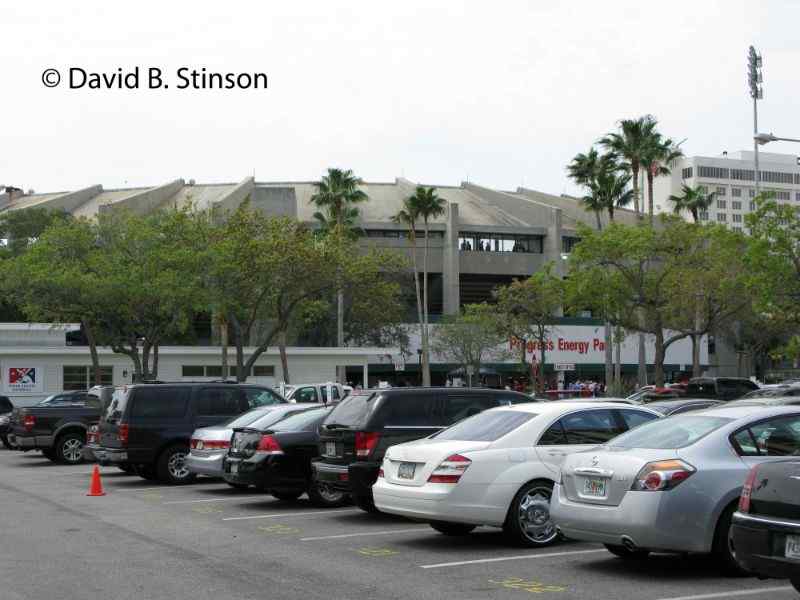
In 1998, the naming rights to Al Lang Stadium were sold and the stadium was renamed Florida Power Park. It later was renamed Progress Energy Park in 2003. The stadium complex currently is known as Al Lang Field at Progress Energy Park.
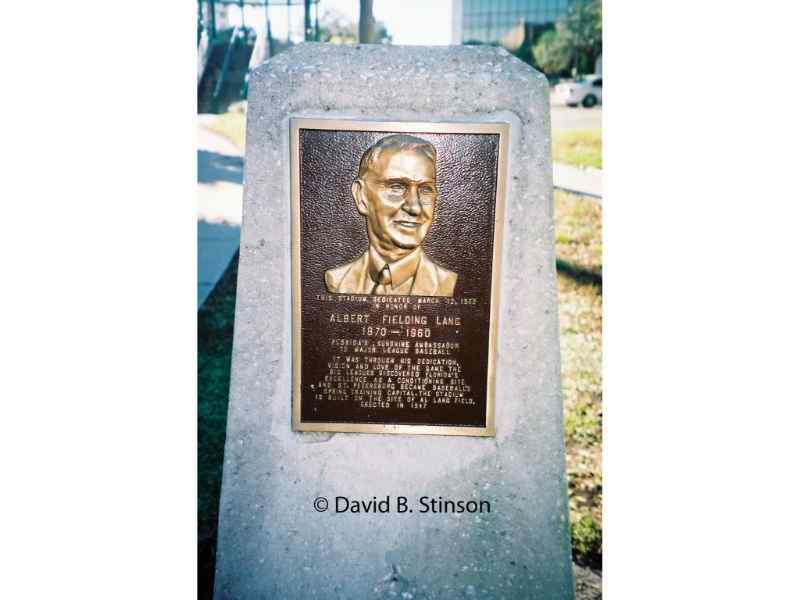
The Yankees departed Al Lang Field for Fort Lauderdale after the 1960 Spring Training season and the Cardinals departed for Palm Beach after the 1997 season.

Other professional teams that once called the ballpark home were the New York Giants (1951), the New York Mets (1962-1987), and the Baltimore Orioles (1992-1995).
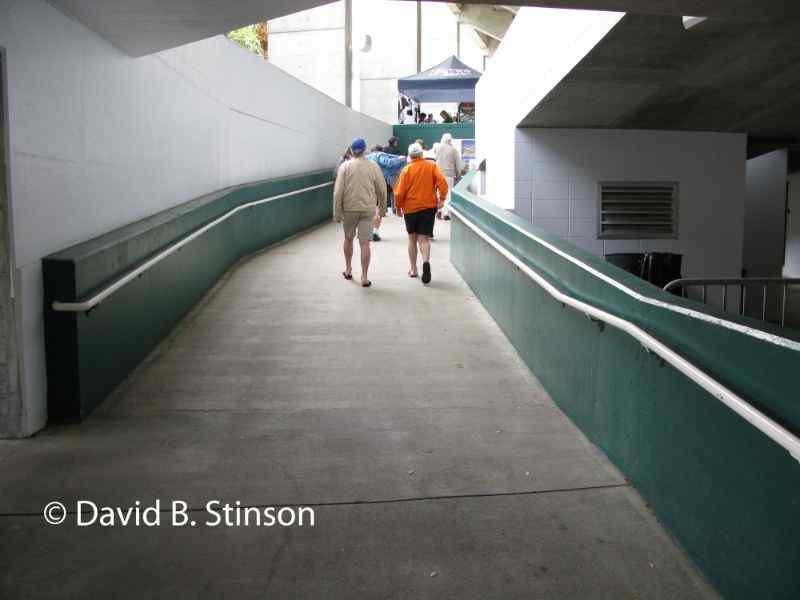
In 1998, the Tampa Bay Devil Rays took over the ballpark.
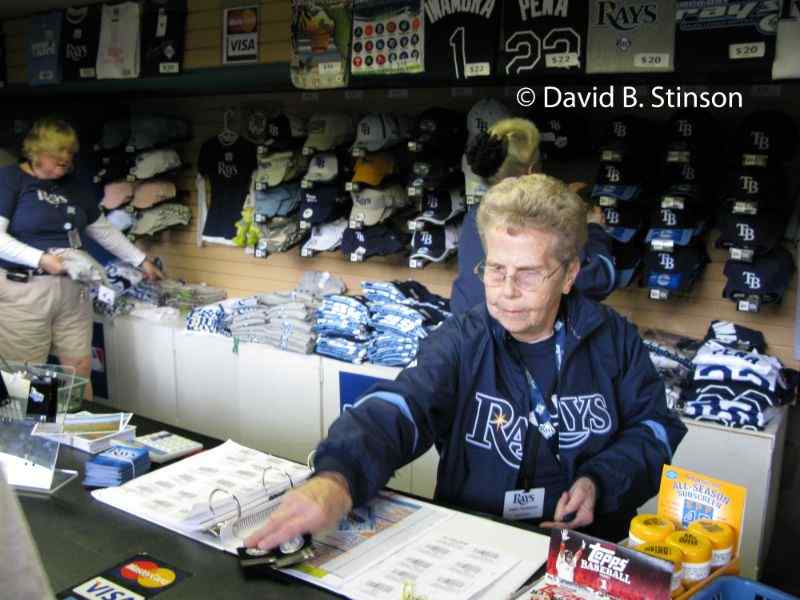
The Devil Rays, a 1998 MLB expansion team, played their regular season games at the Tropicana Dome, located less than two miles west of Progress Energy Park.

Although the concrete structure of the stadium itself leaves much to be desired, the setting at Progress Energy Park was one of the most beautiful of all spring training venues, current or former.
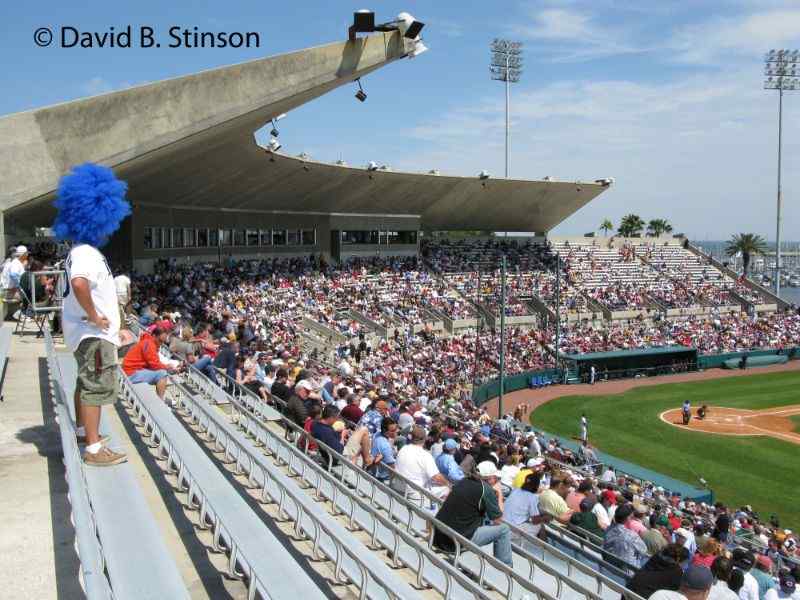
The view of the playing field, with Tampa Bay as a back drop,was breathtaking.
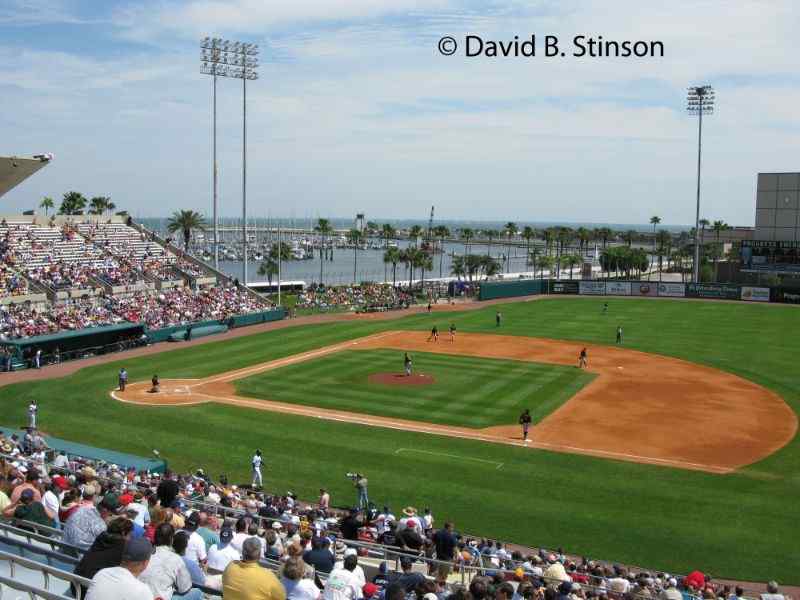
Beginning in 2005, the Tampa Bay Rays began a campaign to build a new major league ballpark on the site of Progress Energy Field. However, those plans met public opposition and quietly were withdrawn in 2009.

The Rays trained at Progress Energy Park through the 2008 season.

In 2009 the Rays moved to a new ballpark in Port Charlotte, Florida, 80 miles south.
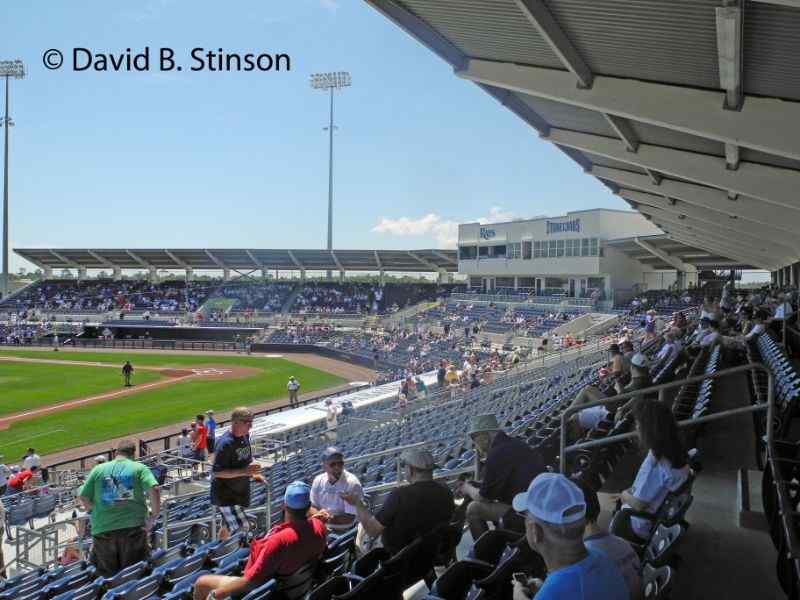
Charlotte Sports Park previously had been the home Spring Training home for the Texas Rangers. The park was renovated prior to the Rays arrival in 2009.
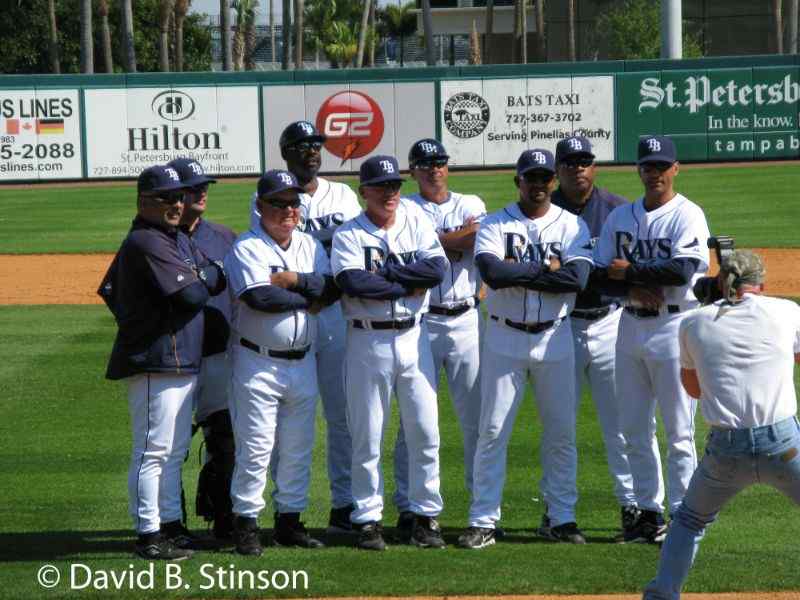
The facade of Progress Energy Park includes a series of plaques which in 1998 had been part of the “Jim Healey and Jack Lake Baseball Boulevard.” The 85 brass home plate plaques that made up the Baseball Boulevard told the story of Major League baseball St. Petersburg.
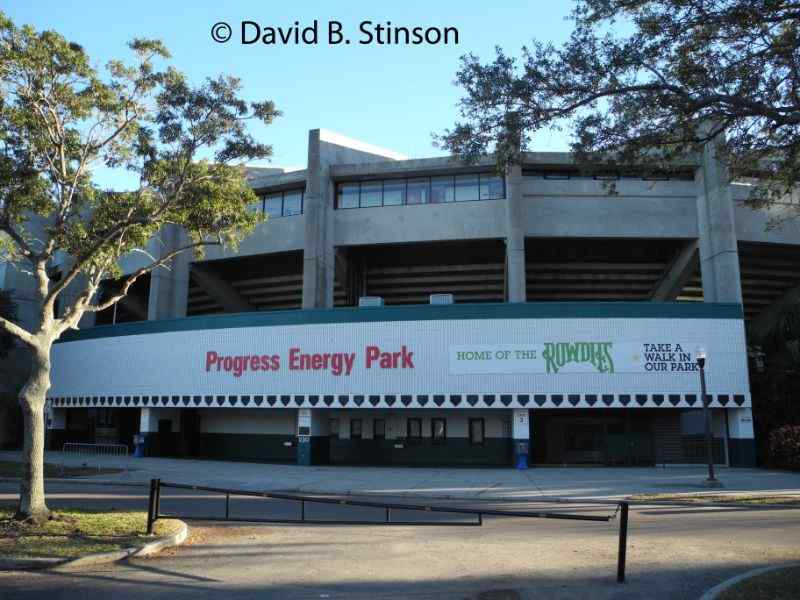
One of the plaques honors the opening of Waterfront Park in 1922. However, the plaque states, incorrectly, that Waterfront Park was located on land that later became Bayfront Center, an indoor sports arena built in 1965 and demolished in 2004. The former site of Bayfront Center is now the Salvador Dali Museum, which is located south of Progress Energy Field on Bay Shore Drive.
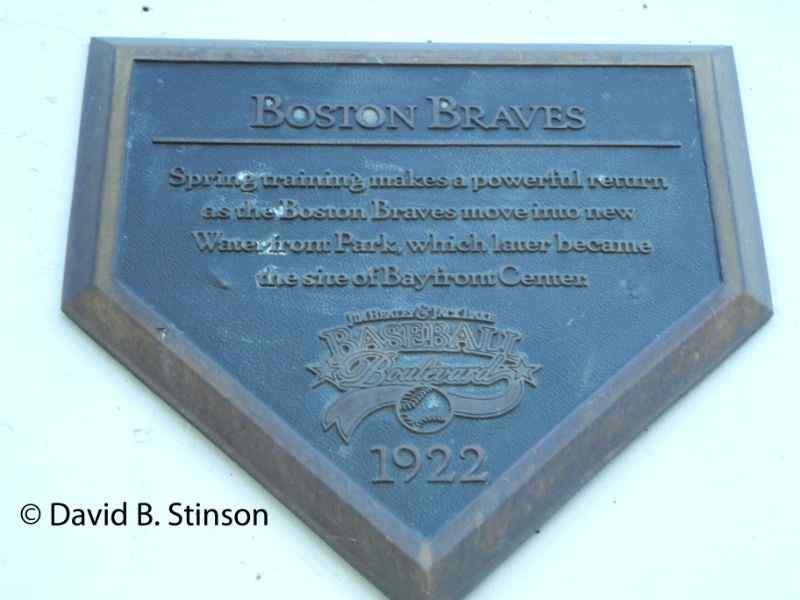
Progress Energy Park is still used to today, mainly for minor league soccer and music concerts. Although St. Petersburg residents appear to favor keeping the site a public park, it seems only a matter of time before the stadium itself is demolished. Hopefully, the historic field will be maintained, for it represents over 90 years of baseball spring training history.
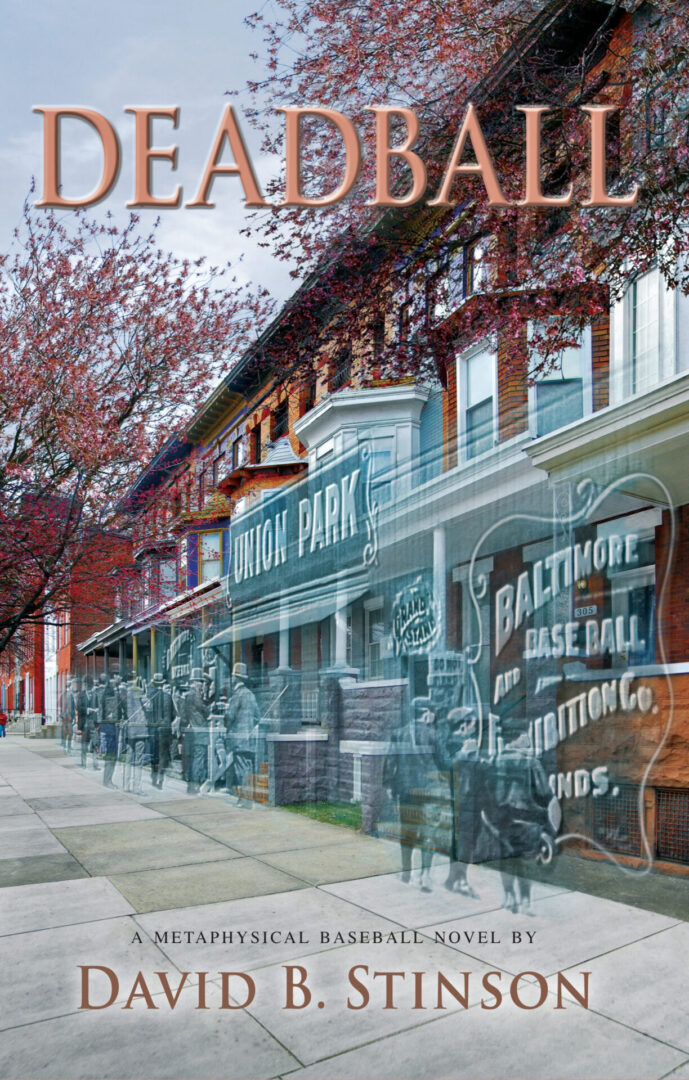

[…] The Yankees previously had played at their spring training games in St. Petersburg, Florida at Al Lang Field and Crescent Lake Park/Huggins-Stengel […]
[…] In 1947, the Yankees moved their spring training home games less than two miles south to Al Lang Field, now known as Progress Energy Park. […]